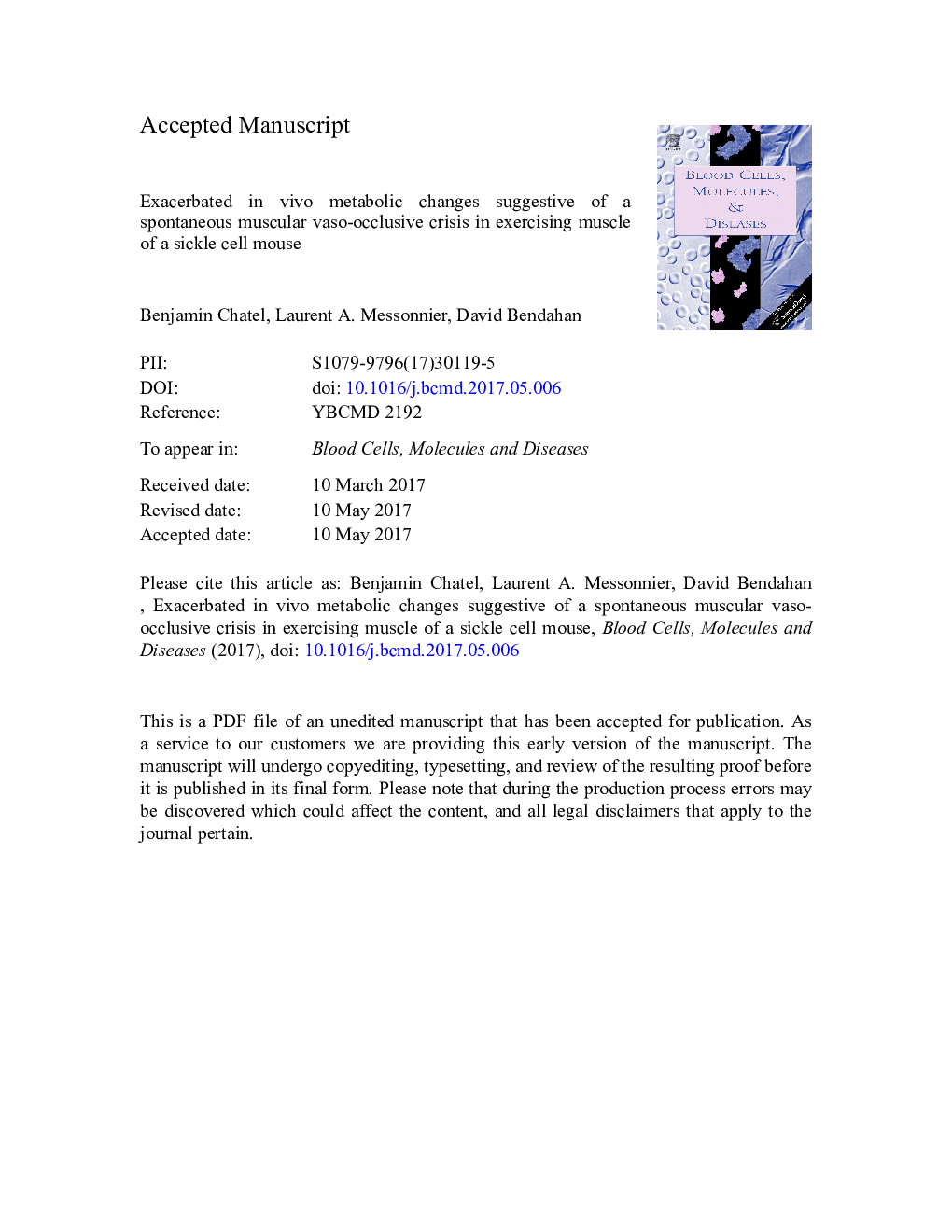| Article ID | Journal | Published Year | Pages | File Type |
|---|---|---|---|---|
| 5591454 | Blood Cells, Molecules, and Diseases | 2017 | 14 Pages |
Abstract
While sickle cell disease (SCD) is characterized by frequent vaso-occlusive crisis (VOC), no direct observation of such an event in skeletal muscle has been performed in vivo. The present study reported exacerbated in vivo metabolic changes suggestive of a spontaneous muscular VOC in exercising muscle of a sickle cell mouse. Using magnetic resonance spectroscopy of phosphorus 31, phosphocreatine and inorganic phosphate concentrations and intramuscular pH were measured throughout two standardized protocols of rest - exercise - recovery at two different intensities in ten SCD mice. Among these mice, one single mouse presented divergent responses. A statistical analysis (based on confidence intervals) revealed that this single mouse presented slower phosphocreatine resynthesis and inorganic phosphate disappearance during the post-stimulation recovery of one of the protocols, what could suggest an ischemia. This study described, for the first time in a sickle cell mouse in vivo, exacerbated metabolic changes triggered by an exercise session that would be suggestive of a live observation of a muscular VOC. However, no evidence of a direct cause-effect relationship between exercise and VOC has been put forth.
Keywords
Related Topics
Life Sciences
Biochemistry, Genetics and Molecular Biology
Molecular Biology
Authors
Benjamin Chatel, Laurent A. Messonnier, David Bendahan,
